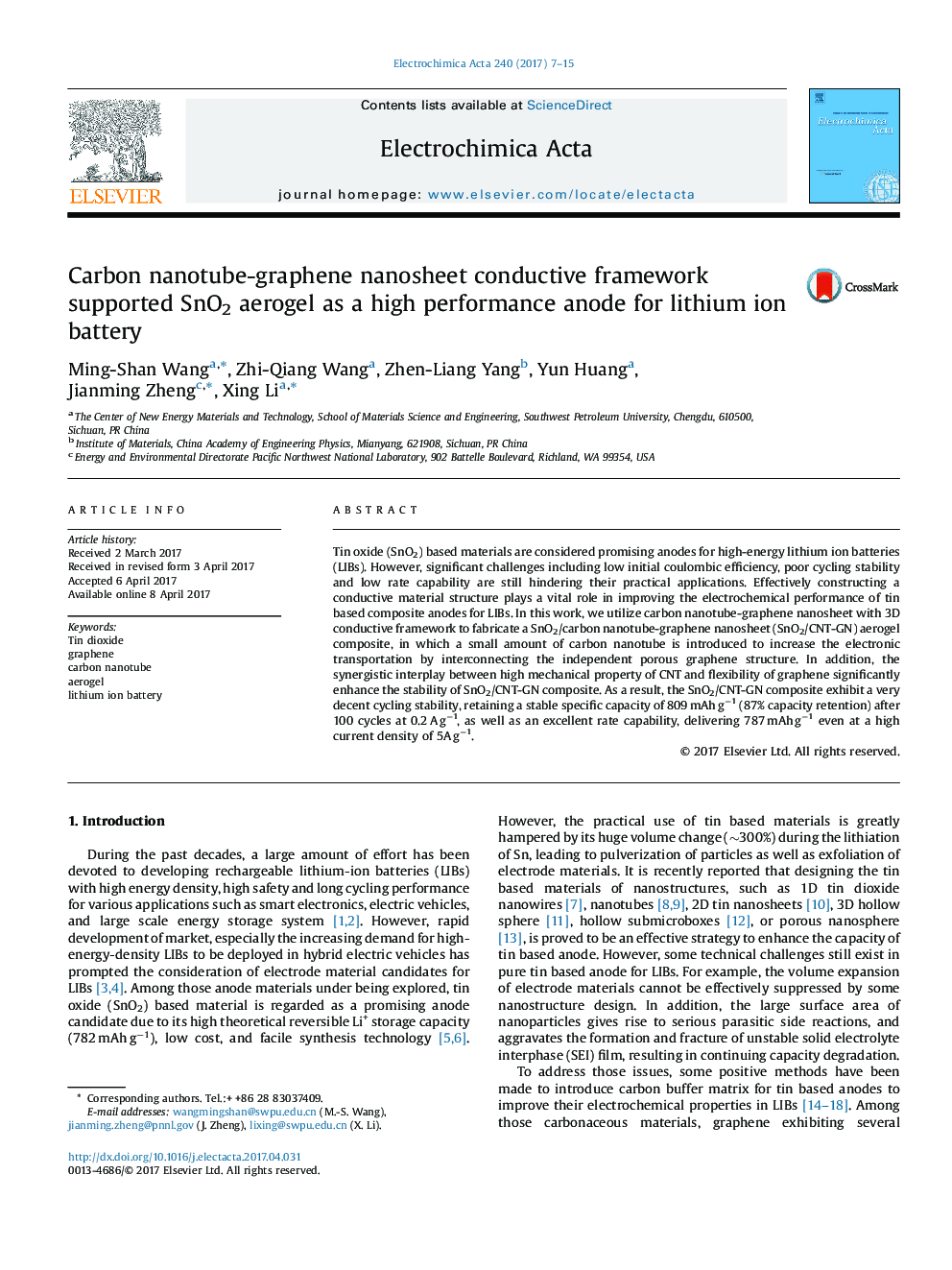| Article ID | Journal | Published Year | Pages | File Type |
|---|---|---|---|---|
| 6471243 | Electrochimica Acta | 2017 | 9 Pages |
â¢3D conductive frameworks supported SnO2 aerogel composite is fabricated.â¢Carbon nanotube(CNT) is assist to interconnect independent porous graphene(GN).â¢Interplay between CNT and GN enhance the stability of SnO2/CNT-GN composite.â¢Stable specific capacity and excellent rate capability are achieved.
Tin oxide (SnO2) based materials are considered promising anodes for high-energy lithium ion batteries (LIBs). However, significant challenges including low initial coulombic efficiency, poor cycling stability and low rate capability are still hindering their practical applications. Effectively constructing a conductive material structure plays a vital role in improving the electrochemical performance of tin based composite anodes for LIBs. In this work, we utilize carbon nanotube-graphene nanosheet with 3D conductive framework to fabricate a SnO2/carbon nanotube-graphene nanosheet (SnO2/CNT-GN) aerogel composite, in which a small amount of carbon nanotube is introduced to increase the electronic transportation by interconnecting the independent porous graphene structure. In addition, the synergistic interplay between high mechanical property of CNT and flexibility of graphene significantly enhance the stability of SnO2/CNT-GN composite. As a result, the SnO2/CNT-GN composite exhibit a very decent cycling stability, retaining a stable specific capacity of 809 mAh gâ1 (87% capacity retention) after 100 cycles at 0.2 A gâ1, as well as an excellent rate capability, delivering 787 mAh gâ1 even at a high current density of 5A gâ1.
Graphical abstractDownload high-res image (210KB)Download full-size image
